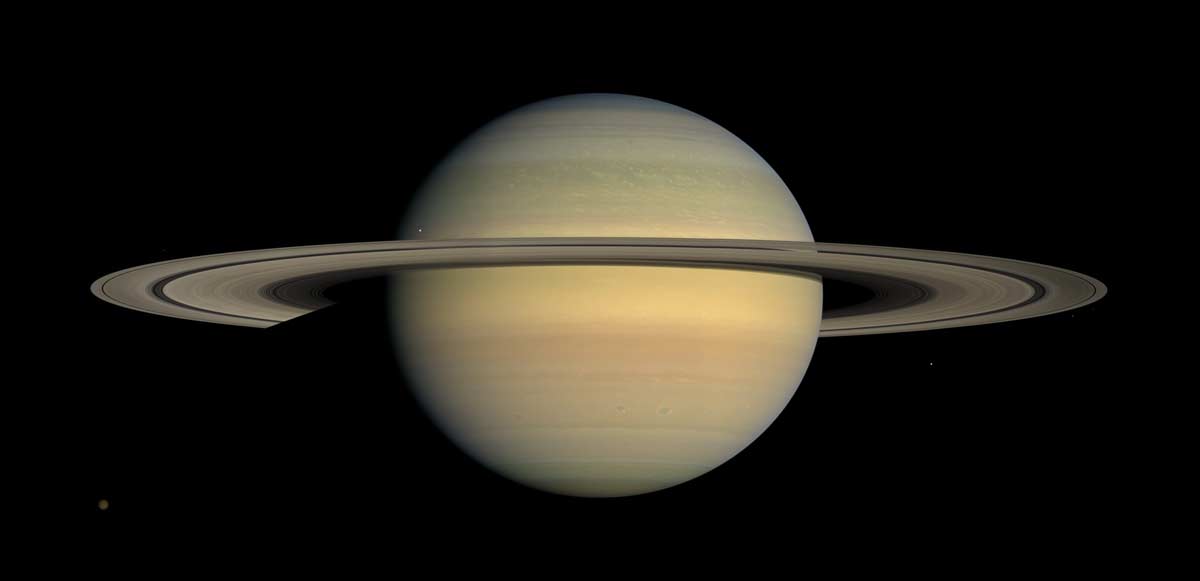Sunny Seas Sparkle on Saturn's Moon Titan (Photo)

A new photo from a NASA spacecraft studying Saturn and its many moons shows the sun reflecting off the seas of the ringed wonder's moon Titan.
For the first time, NASA's Cassini spacecraft captured sunlight glinting off both of Titan's northern polar seas. The glow is usually difficult to see because a haze of liquid methane clouds fills Titan’s atmosphere. Although similar sparkle has been captured on the seas individually, this is the first time it has been spotted in both in a single image.
The sunlight, also called specular reflection, shines in the upper left region of the image, in the southern region of Titan's largest sea, Kraken Mare. The sun also shines on another sea, Ligeia Mare, which is partially covered in its northern region by a bright, arrow-shaped grouping of clouds.
The area toward the upper left of the feature reveals a "bathtub ring" around Kraken Mare. This bright margin of evaporated deposits formed as the liquid methane and ethane of the ocean evaporated, and reveals that the sea was once larger than its size today.
The brightness of the sun glint overwhelmed Cassini's Visual and Infrared Mapping Spectrometer (VIMS) instrument, which captured the rare sunny-sea combination. The image is shown in wavelengths that correspond to those that pierce Titan's clouds. To the human eye, only haze would be visible.
The largest moon orbiting Saturn, Titan is the only body in the solar system other than Earth known to host liquid at its surface. Instead of water, the lakes and seas of the satellite are made up of hydrocarbons, organic compounds that also rain down from the clouds that cover the moon.
The Cassini spacecraft has been studying the Saturn system for about 10 years. It launched to space in 1997, and is expected to continue gathering data until at least 2017, at which point it will make an intentional death-dive into the planet's atmosphere, ending its mission.
Breaking space news, the latest updates on rocket launches, skywatching events and more!
Follow us @Spacedotcom, Facebook and Google+. Original article on Space.com.

Join our Space Forums to keep talking space on the latest missions, night sky and more! And if you have a news tip, correction or comment, let us know at: community@space.com.

Nola Taylor Tillman is a contributing writer for Space.com. She loves all things space and astronomy-related, and always wants to learn more. She has a Bachelor's degree in English and Astrophysics from Agnes Scott College and served as an intern at Sky & Telescope magazine. She loves to speak to groups on astronomy-related subjects. She lives with her husband in Atlanta, Georgia. Follow her on Bluesky at @astrowriter.social.bluesky
